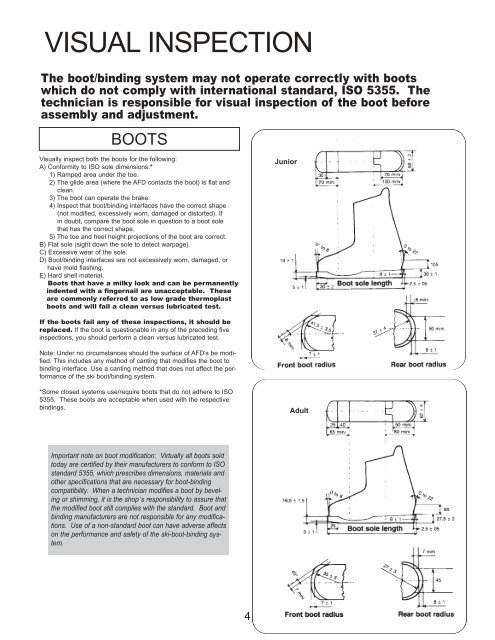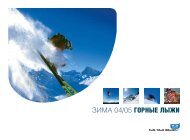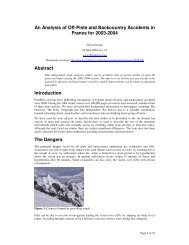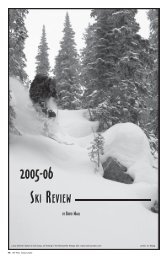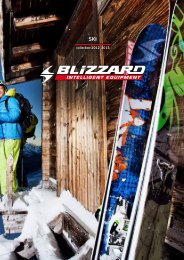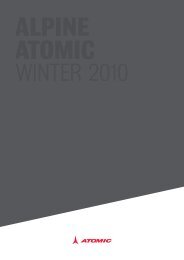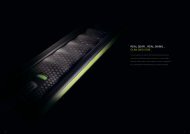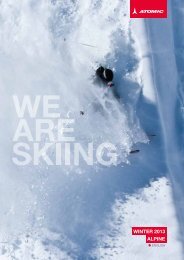You also want an ePaper? Increase the reach of your titles
YUMPU automatically turns print PDFs into web optimized ePapers that Google loves.
VISUAL INSPECTION<br />
The boot/binding system may not operate correctly with boots<br />
which do not comply with international standard, ISO 5355. The<br />
technician is responsible for visual inspection of the boot before<br />
assembly and adjustment.<br />
BOOTS<br />
Visually inspect both the boots for the following:<br />
A) Conformity to ISO sole dimensions:*<br />
1) Ramped area under the toe.<br />
2) The glide area (where the AFD contacts the boot) is flat and<br />
clean.<br />
3) The boot can operate the brake.<br />
4) Inspect that boot/binding interfaces have the correct shape<br />
(not modified, excessively worn, damaged or distorted). If<br />
in doubt, compare the boot sole in question to a boot sole<br />
that has the correct shape.<br />
5) The toe and heel height projections of the boot are correct.<br />
B) Flat sole (sight down the sole to detect warpage).<br />
C) Excessive wear of the sole.<br />
D) Boot/binding interfaces are not excessively worn, damaged, or<br />
have mold flashing.<br />
E) Hard shell material.<br />
Boots that have a milky look and can be permanently<br />
indented with a fingernail are unacceptable. These<br />
are commonly referred to as low grade thermoplast<br />
boots and will fail a clean versus lubricated test.<br />
Junior<br />
If the boots fail any of these inspections, it should be<br />
replaced. If the boot is questionable in any of the preceding five<br />
inspections, you should perform a clean versus lubricated test.<br />
Note: Under no circumstances should the surface of AFD’s be modified.<br />
This includes any method of canting that modifies the boot to<br />
binding interface. Use a canting method that does not affect the performance<br />
of the ski boot/binding system.<br />
*Some closed systems use/require boots that do not adhere to ISO<br />
5355. These boots are acceptable when used with the respective<br />
bindings.<br />
Adult<br />
Important note on boot modification: Virtually all boots sold<br />
today are certified by their manufacturers to conform to ISO<br />
standard 5355, which prescribes dimensions, materials and<br />
other specifications that are necessary for boot-binding<br />
compatibility. When a technician modifies a boot by beveling<br />
or shimming, it is the shop’s responsibility to assure that<br />
the modified boot still complies with the standard. Boot and<br />
binding manufacturers are not responsible for any modifications.<br />
Use of a non-standard boot can have adverse affects<br />
on the performance and safety of the ski-boot-binding system.<br />
4


